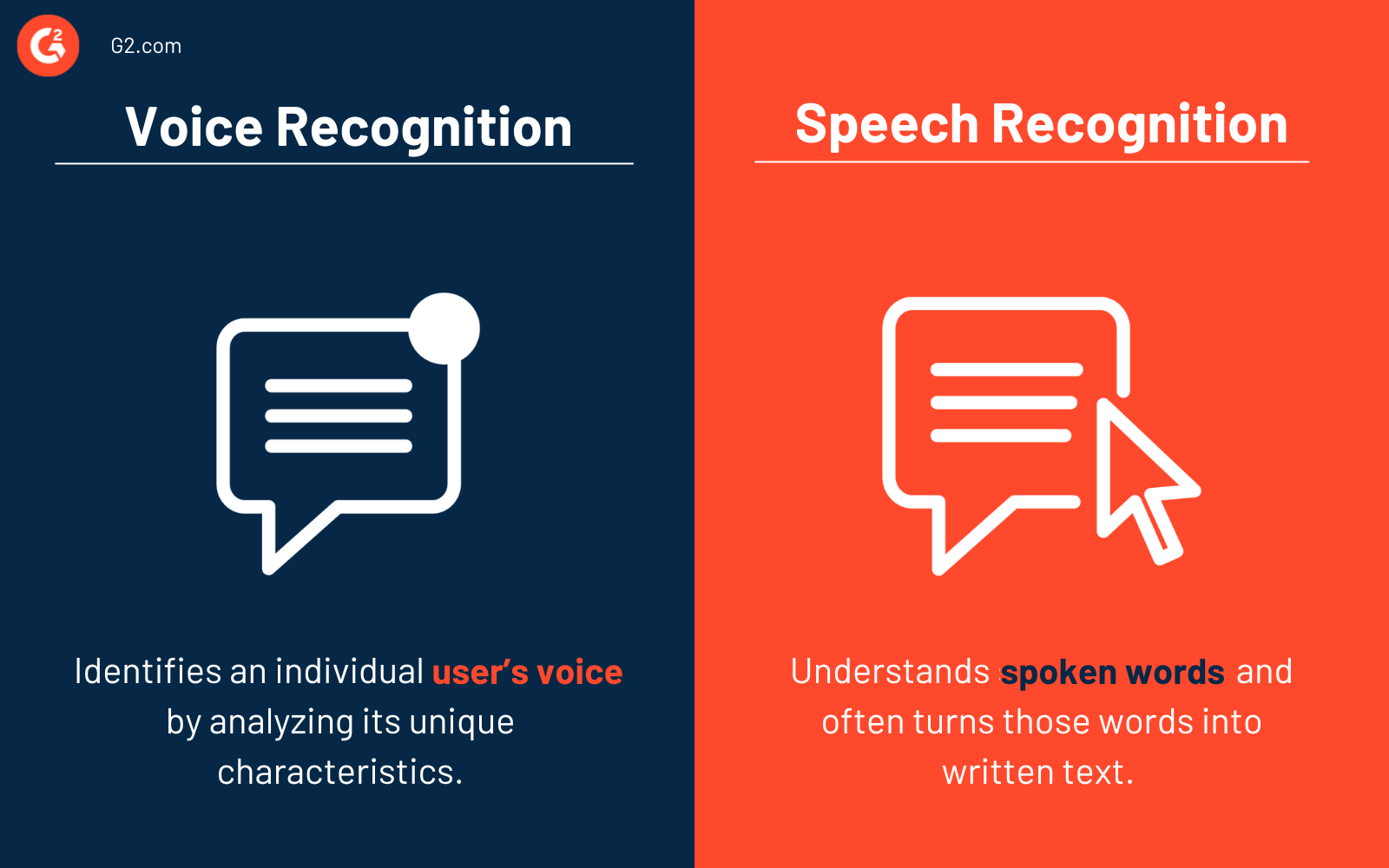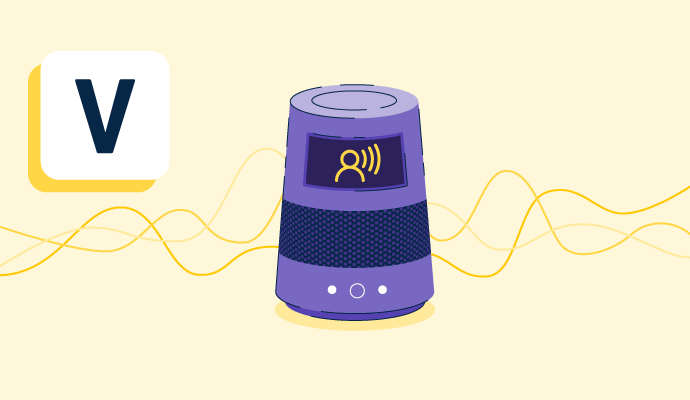What is voice recognition?
Voice recognition identifies and decodes users’ speech. It recognizes unique patterns and markers to tell the difference between a human’s voice and another’s or between human voices and ambient sounds.
Voice recognition has become commonplace in home and commercial technologies. Many smart home products, such as voice assistants and smart speakers, use voice recognition to identify when someone is speaking to them. Since each human has a unique voiceprint, some industries use voice recognition technology to verify users’ identities when accessing secure systems.
Companies also use voice recognition software to translate calls and conversations into a format that’s easy to search. It also helps them improve accessibility for some employees, who can control devices with their voice instead of their hands and eyes.
How voice recognition works
Voice recognition has risen in popularity alongside smart technologies. Voice recognition typically follows this flow:
- Voice travels via electrical current to an analog-to-digital converter (ADC). This converter changes the audio into a digital signal.
- Filters help differentiate the voice from background noise. The system recognizes certain frequencies as human ones and separates sounds higher or lower than that range.
- The system learns a specific user’s voice through a process called template matching. The user speaks specific words or sentences multiple times to train the software. The software numericizes and averages these inputs and stores them in its system as a template for future use.
- When a speaker later tries to access a system with their voice, the technology compares features between their voice and those stored in its database to decide whether the voice matches.
Uses of voice recognition
Voice recognition has existed for decades, but its accuracy and efficiency are increasing rapidly. The technology has use cases in many fields, including:
- Security. Banks and financial institutions use voice recognition as an additional layer of biometric authentication. Since each human voice is unique, it’s difficult to accurately mimic. Often, companies combine voice recognition with other forms of security, like fingerprints, facial or retinal scans, and usernames and passwords.
- Consumer electronics. Internet-of-things (IoT) devices, like smart speakers and voice assistants, also rely on voice recognition. The technology allows them to pick out human voices from background noise from televisions and radios.
- Vehicles. Voice and speech recognition enables hands-free user interfaces in cars, allowing users to keep their eyes on the road while accomplishing other tasks. For instance, they can tell their voice assistant to call someone or turn off the music while safely navigating the road.
- Warehouses. Some warehouses use voice picking to save workers time and optimize operations. In this system, workers wear a headset with a microphone. The voice-picking program integrates with the company’s existing warehouse management system and tells the workers what orders to pick. The employees then confirm the order by speaking into the microphone. The software interprets and captures their words with voice and speech recognition capabilities.
Benefits of voice recognition
Organizations appreciate voice recognition software for its many use cases that increase employee efficiency and protection. Some specific advantages include:
- Increasing productivity. Speaking is often faster than typing. Employees get work completed more quickly by using their voice instead of a keyboard.
- Improving security. A user can set a voice-recognition-enabled device to respond only to their voice, with its unique inflection, tone, and pitch. If someone else tries to activate or access the device, it won’t respond.
- Boosting personal safety. Voice recognition lets users keep their hands and eyes on other tasks. In applications like driving, this lets users multitask safely. In healthcare, it allows patients and doctors to interact with a voice assistant and decrease the spread of germs.
- Creating accessibility. Voice recognition allows people to control a computer or IoT device with only their voice. This provides accessibility for users with limited hand or vision use.
Voice recognition vs. speech recognition
People often use the terms voice recognition and speech recognition interchangeably, but they are different technologies.

Voice recognition identifies an individual user’s voice by analyzing its unique characteristics. Devices like virtual assistants, computers, and smartphones use this technology to recognize and interact with humans. Voice recognition is particularly helpful in user authentication for security purposes.
Speech recognition understands spoken words and often turns those words into written text. This technology uses artificial intelligence (AI) techniques like natural language processing (NLP) to break down elements like grammar and syntax. Some use cases for speech recognition include dictation in healthcare and transcription of interviews and phone calls in business.
Many devices and software programs combine the power of voice and speech recognition. Together, these technologies let computer or internet-enabled products know who they speak with and what they say.
Learn more about the history of voice recognition and popular software enabling it.

Kelly Fiorini
Kelly Fiorini is a freelance writer for G2. After ten years as a teacher, Kelly now creates content for mostly B2B SaaS clients. In her free time, she’s usually reading, spilling coffee, walking her dogs, and trying to keep her plants alive. Kelly received her Bachelor of Arts in English from the University of Notre Dame and her Master of Arts in Teaching from the University of Louisville.

